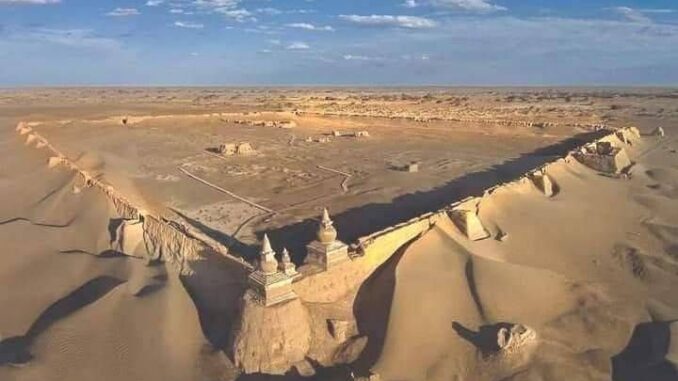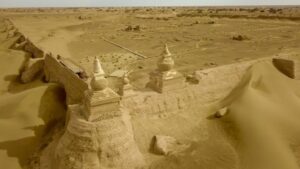
Located where the westernmost flag of Inner Mongolia stands, in the middle of the Gobi desert, there was once an extremely prosperous kingdom. It was a center of religious learning, art and commerce. But all that remains now are the crumbling ramparts that once protected the city, a few remaining mud buildings and scattered sun-bleached bones.

Khara-Khoto, or “black city” in Mongolian, was founded in 1032 AD as the capital of the Western Xia Dynasty (1038–1227) and quickly became a center of trade prosperous.
The city was captured by Genghis Khan in 1226, but instead of leaving it in ruins as he often did with captured cities, Khara-Khoto actually flourished under Mongol rule. During the time of Kublai Khan, the city expanded to three times its original size and was even mentioned by Marco Polo in his travel book as Tangut of Etzina.
Leave a Reply